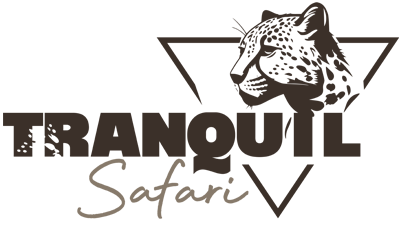The Kilombero Valley in Southern Tanzania isn’t your typical national park—it’s a sprawling Ramsar-designated wetland and Game Controlled Area that’s just stepped into the spotlight as part of the country’s first official wildlife corridor. Spanning about 140 kilometres long and 40 kilometres wide across Kilombero and Ulanga districts in Morogoro and Lindi regions, this 8,850-square-kilometre basin is East Africa’s largest seasonal floodplain, carved by the life-giving Kilombero River that feeds into the mighty Rufiji system.
In April 2025, the Tanzanian government gazetted the Nyerere-Udzungwa Wildlife Corridor (NUWC)—running through the valley—to protect elephant migration routes linking Udzungwa Mountains National Park to Nyerere (formerly Selous) National Park, marking a historic win for connectivity in a fragmenting landscape.
Though not yet a standalone national park, its status as a protected Ramsar site and controlled area (with regulated access for tourism and communities) makes it a vital extension of Tanzania’s safari circuit. Here, endless grasslands morph into shallow lakes during rains, miombo woodlands fringe misty hills, and the air hums with the calls of hidden treasures—making it a haven for eco-adventurers seeking raw, riverine magic.
The Kilombero Floodplain
The valley’s pulse is its seasonal flood—November to May transforms parched plains into a vast, shallow sea, nurturing one of Africa’s richest aquatic nurseries. Vegetation zones layer like a living quilt: expansive floodplains dominated by tall guinea grass (Panicum maximum), elephant grass (Pennisetum spp.), and papyrus (Cyperus papyrus) swamps that sway like green waves along the river’s oxbows.
Transitional wooded grasslands blend with miombo woodlands of Brachystegia and Julbernardia trees, their bronze trunks etched by fire-scarred savannas. Fringing forests—lush with sausage trees (Kigelia pinnata), river bushwillow (Combretum spp.), and wild frangipani (Leptospermum capassa)—hug the riverbanks and connect to the Eastern Arc Mountains’ misty slopes.Scenery shifts with the seasons: dry months reveal golden horizons dotted with termite mounds and acacia sentinels, while wet spells create mirrored wetlands alive with dragonflies. It’s a fertile powerhouse, too—irrigating rice paddies and sugarcane that feed Tanzania’s breadbasket—but climate pressures like erratic rains and upstream dams are testing its resilience.
Wildlife of Kilombero
Kilombero’s animals thrive on this watery abundance, with the valley serving as a crucial migration link for crocs and hippos to Selous. Elephants—up to 1,000 strong—trumpet through corridors, their paths now safeguarded by the 2025 NUWC designation to curb human-wildlife clashes.
Lions prowl the fringes (though numbers have dipped from poaching and habitat loss), while buffalo herds blacken the plains. The star? The puku antelope (Kobus vardonii), a chestnut-coated grazer with lyre-shaped horns, home to 75–76% of the global population here, grazing reed islands like living statues. Hippos grunt in river pods, Nile crocs (including endemic Crocodylus variants) ambush from murky pools, and zebras stripe the open flats. Smaller scenes steal hearts: black-and-white colobus monkeys leap through gallery forests, bushbucks melt into thickets, and warthogs trot like armoured pigs. Fish like tilapia swarm the shallows, sustaining otters and eagles.
Birdlife
With over 300 species, Kilombero’s a twitcher’s dream—its wetlands and forests host four endemics, including the dapper Kilombero weaver (yellow-capped weavers weaving grassy nests) and Kilombero cisticola (a skulking warbler in the reeds).
Spot melodious cisticolas flitting over floods, rufous-winged sunbirds sipping from alders, or dapple-throated mountain robins in the miombo. Waterbirds dominate: African fish-eagles screech from perches, crowned cranes strut in leks, and pelicans wheel over shallows. Forest patches like Magombelo hide Udzungwa forest partridges and Iringa akalats. Dry season concentrates flocks at waterholes—prime for dawn stakeouts.
What to do at Kilombero Valley
Kilombero’s low-key thrills lean eco-focused, blending the Game Controlled Area’s access with corridor protections. Dawn boat safaris on the Kilombero River ($50–80/person) glide past hippo yawns and croc slides, with chances for tilapia angling. Guided walking trails (ranger-led, ~$20) trace floodplain edges for puku herds or colobus troops, while photographic hides overlook reedbeds for lion ambushes. Birdwatching tours from Ifakara (~6–8 hours, $100+) target endemics, often combining with cultural stops at fishing villages. Multi-day combos with Udzungwa (hikes to Sanje Falls) or Mikumi (game drives) make seamless loops—think 6-day itineraries hitting waterfalls, canoes, and sunrises.
Emerging: Kivukoni Bridge viewpoints for river panoramas. No big-game hunts here, but controlled areas nearby allow it—stick to cameras for the valley’s vibe.
Getting There
Rough roads keep Kilombero wild, but it’s doable from Dar es Salaam (400 km, 7–8 hours via paved A7 to Ifakara, then gravel to Mikeregembe gate—4WD essential). From Udzungwa Mountains NP, it’s a quick 1-hour hop to Ifakara, plus 1.5 hours to the valley—ideal for circuit trips.
Fly light charters to Ifakara Airstrip (from Dar or Selous, ~$200–300) for a 45-minute bush landing. Rail from Dar to Ifakara adds adventure (Tazara line, 6–7 hours). Pair with Selous (east) or Mikumi (north) for fly-drive ease—tour ops like ATR Safari handle transfers.
Best Time to Go
Chase the dry spells for access and action: July–September (cool, 20–28°C, game at water) or November–January (post-rains green-up, bird bonanzas, milder 25–30°C).
Avoid March–June floods—tracks vanish, but it’s lush for locals. In 2025, the NUWC boosts year-round patrols, but dry months shine for elephants crossing.
Where to Stay
Options stay rustic and riverine—think canvas amid the reeds. In the valley: seasonal tented camps like Kilombero North Safaris (fly-in luxury, $300–500/night full-board) offer en-suite tents with sundowners overlooking floods.
Public campsites at Mikeregembe (~$20/person) provide basics—bring your own gear. Nearby Ifakara has budget guesthouses (e.g., New Ifakara Hotel, $30–50/night) with AC and Wi-Fi. For combos: Udzungwa Falls Lodge ($150–250) near the mountains, or Vuma Hills Tented Camp en route. Book via TANAPA or ops—eco-focus is growing post-2025.
Conservation in Action
Kilombero’s a biodiversity hotspot under siege—poaching, farming encroachment, and water woes threaten its Ramsar status (listed “in danger” since 2014).
The 2018–2021 Kilombero Catchment Management Plan (KCMP) tackled pollution and overgrazing via stakeholder forums, boosting tree-planting and bee-keeping for communities. Now, the NUWC—spanning 1,200 km²—secures elephant paths with anti-snaring patrols and village incentives, backed by AWF and WWF.
Challenges persist (deforestation up 30% since 2000), but 2025’s corridor is a game-changer, linking 350 plant and 300 bird species across the Udzungwas.
